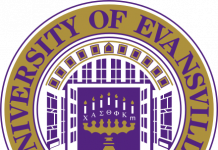In a time of unprecedented disruption, it’s mostly business as usual at a handful of schools in Indiana.
While brick-and-mortar schools have sent students home for at least six weeks, full-time online schools didn’t have physical classrooms to close amid the new coronavirus. Their students are already set up to work from home. Their teachers are accustomed to leading remote lessons.
“The students are seeing so much change in their world that we want to be something that doesn’t [change],†said Liz Sliger, who leads Indiana Digital Learning School.
Long before the COVID-19 outbreak, Indiana was experimenting with whether students could learn just as effectively without physically going to school. For nearly a decade, the state’s virtual charter schools have recreated classrooms at home, allowing students to interact with teachers and classmates through computer screens.
Full-time online schools aren’t exactly comparable to the temporary e-learning being used as a stop-gap measure while campuses are closed in an attempt to contain the spread of the pandemic. But what we know about online schools, their long-standing problems, and the state’s years-long battle to improve them suggests that the “new normal†of stay-at-home learning could present challenges — something families are no doubt discovering already.
Research has shown that full-time online settings aren’t as productive for students as in-person learning. A recent study revealed that Indiana students saw a decline in both math and reading after switching to virtual charter schools.
Plus, the recent $86 million enrollment scandal that shut down Indiana Virtual School and Indiana Virtual Pathways Academy was a hard lesson in how easily problems in online education can fly under the radar.
The inactive students at those two troubled virtual schools — who drove up the schools’ state funding, allowing millions of dollars to go to a web of companies with ties to school officials — prompted state lawmakers to drill down on how the state’s remaining online schools interact with students and ensure participation. Those issues also set off a federal investigation.
Here’s what Indiana’s experience with virtual schools can teach us about remote learning.
🔗Students, especially those who were already struggling, could flounder.
Virtual learning offers the potential for many students to access education in a way that wouldn’t have been widely available several years ago.
“In-person school is better than virtual school, but of course we don’t have the option for in-person right now,†said Susanna Loeb, director of the Annenberg Institute at Brown University. “Really what you want to know is whether virtual school is better than nothing. And I think in many cases, it is.â€
But not everyone is on equal footing.
“Virtual tends to work better for students who do better in school anyway,†Loeb said. “Students who have a harder time engaging in school also have a harder time online.â€
A family’s situation plays a huge role in how students learn online, she said: whether families have computers, internet, and a quiet place to work; how much time families can devote to helping children with their lessons; and what other stresses may be going on in the home, especially now, as the coronavirus continues to affect people’s health, employment, and economic security.
🔗There’s a learning curve for online learning.
Some schools that incorporate blended learning into regular school days hope that familiarity will help students transition to learning exclusively from home amid the coronavirus crisis. But even virtual schools say it takes a little while for new students to get used to a different way of learning.
That’s part of the reason why state lawmakers decided virtual schools need to be upfront with families about the expectations for online learning. Such schools are now required to have an onboarding process for students and families.
Chandre Sanchez Reyes, executive director of Indiana Connections Academy and Indiana Connections Career Academy, two virtual charter schools, said brick-and-mortar educators will need to get used to over-communicating, such as explaining how long students should spend on each assignment.
🔗It can be harder to get students to participate.
“It’s not easy to do virtual learning. Some people think it’s super easy — that you put some stuff online and kids just do it,†Sanchez Reyes said. “We know that’s not the case.â€
Virtual schools originally launched to serve specific niches of students often self-motivated to work through online courses: gifted students, elite athletes, or students with significant health challenges.
But for others, staying on task can be a challenge. When the state started requiring virtual schools to address inactive students, hundreds of truant students were kicked out of those schools. That’s why many virtual schools have built-in “nudges†to reach out to students who have been inactive, and schools like Connections require students to have “learning coaches†— such as a parent — to help with education at home.
🔗Students still need face-to-face interactions.
Some might assume that online learning mostly consists of video lectures for large virtual classes. But effective online education requires a human touch, Sanchez Reyes said. Online schools have platforms that allow students to break into small groups, and teachers to reach out to students one-on-one.
Full-time online schools also still have in-person activities, such as field trips and graduation, where students and teachers can connect face-to-face. Getting to know each other in person can help students through online learning, educators say — but, for now, the coronavirus has forced virtual schools to cancel plans to gather.
🔗Online learning might not be for everyone.
Families and teachers usually get to choose whether they want to be in an all-online environment. With everyone now thrown into remote learning, some students and teachers might gravitate toward online lessons while it might not be a good fit for others.
Some students — especially younger ones, like kindergartners — may have never otherwise considered an online learning platform. Some traditional schools don’t usually send devices home with younger students and have had to change those policies.
“One size does not fit all, even for educators, families, and students,†Sanchez said.




